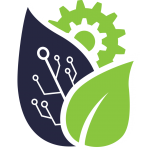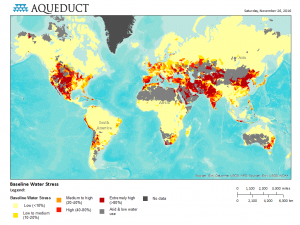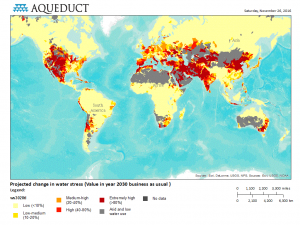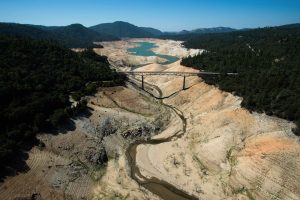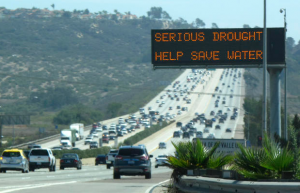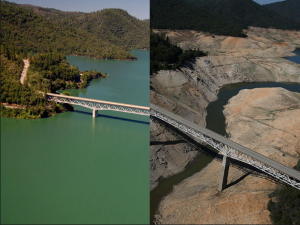Water Resource Management
The lack of clean, potable water has become a grand challenge for communities all over the world. There are three components that comprise water scarcity: the risk to the water supply, risk associated with water quality, and regulatory/protection risk. Half of the global population lives in areas where the water tables are rapidly decreasing; so much so that around 1.8 billion people will live in water scarce areas by 2025. Many potential solutions have been suggested each with their own tradeoffs, including: desalination and catchment techniques, as well as removing water subsidies; but many are still resorting to pumping deep water aquifers to meet their agricultural and industrial needs. Furthermore, runoff in cities redistributes water away from local rivers and streams to flow directly into the ocean, bringing pollutants from pesticides, medical waste or chemical byproducts into natural ecosystems. By fundamentally understanding human interference with the water cycle, we can be better positioned to make impactful changes through conservation and reclamation in urban landscapes.
These two graphs depict the current baseline and project change in water stress in 2030. Stress is defined as the total human withdrawal from the available water flow, annually. It is presented as a percentage, where higher percentages indicate competition among consumers.
During recent years, California itself has experienced extensive drought conditions, which place an enormous amount of stress on municipal water suppliers, raising the cost of extraction, purification and distribution. Communities are being urged to conserve water, especially in areas of harsh drought such as southern California and Nevada, but also here in Santa Cruz, which is considered an area of “extremely high stress.” Santa Cruz simply does not have sufficient water supply to meet rising demand, a trend that is projected to continue beyond 2040; both in terms of quantity and quality (high risk), though our regulatory infrastructure is in place (low to medium risk). Unfortunately, these steps do not do enough to address the changes to the natural resource flow caused by global warming and human overconsumption; a paradigm shift regarding our agricultural, industrial, and residential water usage is vital for sustainable consumption for years to come.
This module is heavily focused on bolstering foundational knowledge regarding water resource flows in the natural and built environment. Students will gain a deeper understanding of water supply and demand, its transmission, purification and distribution and learn to test water contamination levels and compare these to potable standards. Catchment strategies bring many benefits if managed appropriately and sustainably, including the potential for power generation. Rainwater harvesting combined with general conservation efforts such shopping local creates conditions for a more sustainable community and increases local water reliability. Although municipal water is still less expensive than rainwater harvesting in many cases, one must consider the tradeoffs associated with the transport and purification of municipal water when compared to local collection for non-potable applications.

